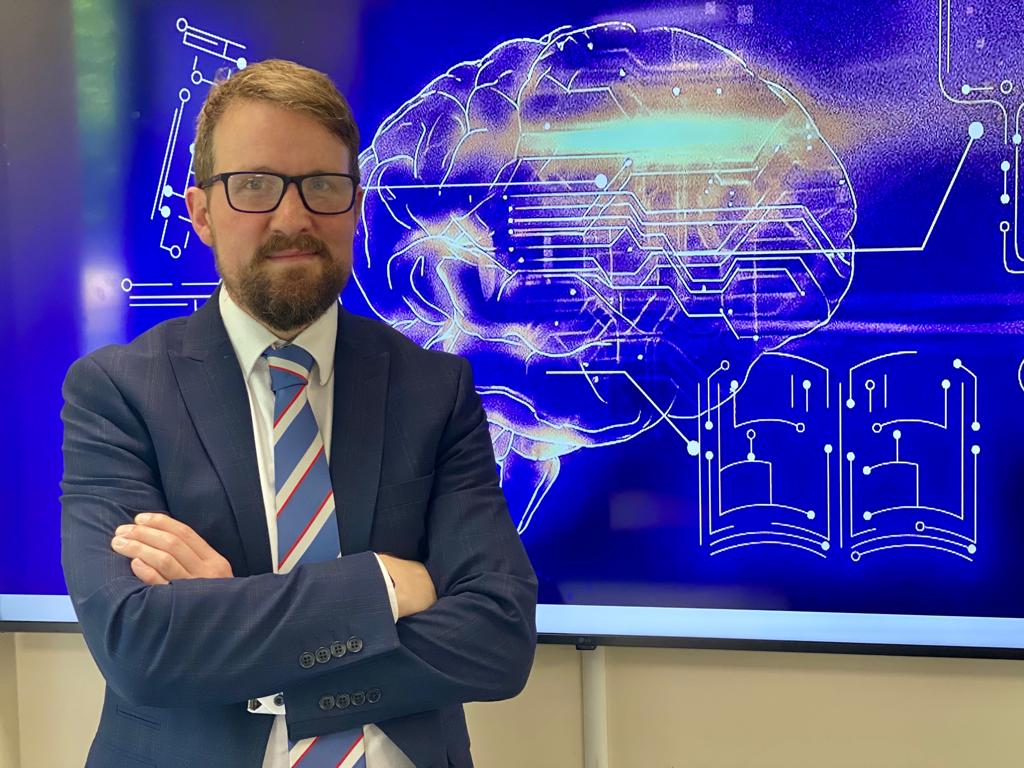STAFF BLOG: Talking about a revolution

As we witness the rapid expansion of artificial intelligence, teacher MICHAEL SPIERS explains why he has set up a Ripon Grammar School AI staff focus group to explore the opportunities and challenges for education
ARTIFICIAL intelligence (AI) is a rapidly developing technology which has the potential to revolutionise the way we teach and learn. As such, it’s essential we understand its practical applications and the potential drawbacks it may present in the classroom, including its implications for student homework.
It was a cold February morning when I first became engaged in a conversation about AI. A few of my friends work in web development and analytics and had been experimenting with the use of AI writing code for their websites. I was – to a degree - interested, yet my ears pricked up when one friend told me that he was asking AI to produce a training seminar in the style of Steeve Coogan’s TV personality Alan Partridge.
Scribbling down the name ChatGPT on a piece of paper, I took my first tentative steps into the world of AI.
My first experiments were centred on the abstract and the ridiculous: ‘Write a short story about a Honey Badger who wins a seat in a marginal constituency only to find he was ineligible for public office; produce a monologue about a staff morning briefing in the style of Alan Bennett; write a rap battle between a cumulonimbus cloud and a stratus cloud; write a limerick about a student who always turns up two minutes late to registration.’
The ideas evolved into rap battles between Hegel and Kant, Malthus and Darwin.
As weeks passed, I started to discuss the AI revolution with students.An AI photograph has been awarded first place in a global photography competition and an AI song featuring two leading artists has been removed from Spotify after being downloaded one million times. Students have a keen understanding of its uses, and this has implications for homework and assessments.
A third of the students I spoke to were aware of ChatGPT and when SnapChat decided to embed their own AI chatbot in the app, the audience was widened and students became even more attached to the world of AI.
Through conversations with learned colleagues, I was able to share thoughts and ideas as to how we could utilise AI in our teaching to benefit students and what we needed to be aware of regarding the implications of student AI usage.
We established a group of interested teachers, from a range of departments, many of whom were far more au fait in the use of AI than I was, all keen tostay ahead of the curve while contributing to the vital conversation about the role of AI in secondary school teaching
Alongside collaborating to develop best practices and strategies we are discussing and evaluating the potential drawbacks and ethical concerns associated with AI in education. This area is already subject to extensive discussion at university and in many schools.
Aside from the writing of abstract hip hop battles between eminent philosophers, AI is capable of an almost unlimited list of creative and educational tasks; AI can put together a 50-question examination on plate tectonics; AI can write a formal letter within seconds; AI can help to identify risks related to school trips; AI can scour every single examiners report and identify common pitfalls of A Level students across the country; AI can write an assembly wishing students luck ahead of their examinations in the style of Dwight Eisenhower’s D Day speech; Within seconds AI can present hundreds of questions designed to elicit a very high level of understanding from students; AI can compose original music from a prompt sentence; AI can create artwork with a single click, and yes, AI can write essays.
These last three points highlight the challenges facing educators at all levels as we witness the infancy of the AI revolution.
Recent developments in AI prompt pertinent questions relating to work undertaken outside the control of a classroom setting, and schools, exam boards and other parties grapple with what it all means for the future.
According to Professor Geoffrey Hinton, the ‘Godfather of AI’ who left Google partly to warn of the dangers of AI, recent developments have seen a pace of advancement that he and others had not anticipated.
In an interview with the Guardian, Professor Hinton dismissed the idea propagated by some that AI is a fad that will pass. Using a bell curve for probability, he suggests that the smallest impact AI will have is akin to that of the smartphone, the likelihood is a fundamental shift in employment around the world necessitating great societal change and an awareness of potentially destabilising state actors seeking to use AI to manipulate the news.
The far end of the curve doesn’t bear thinking about.
Now seemingly ever present in the news, AI will change all our lives to different degrees.
As teachers we can take advantage of amazing innovations to aid teaching and learning. AI can aid us in undertaking certain administration tasks, allowing us to focus on teaching, learning and pastoral support.
Over the course of the next few years the landscape of education will change in a fundamental manner, requiring an evolution of thinking and a great adaptability.
It will be an interesting journey.







